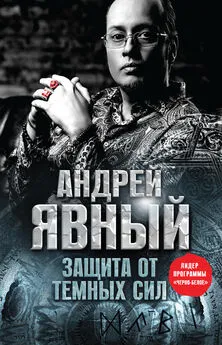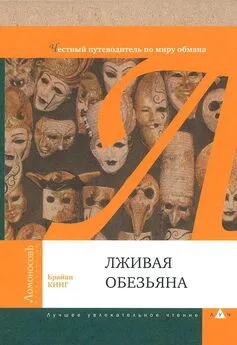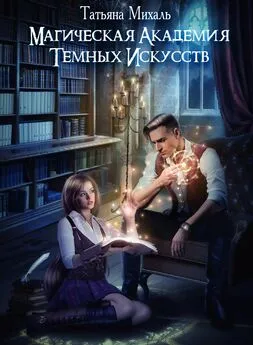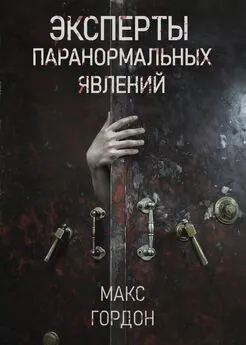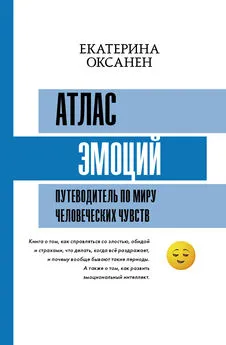Александр Панчин - Защита от темных искусств. Путеводитель по миру паранормальных явлений
- Название:Защита от темных искусств. Путеводитель по миру паранормальных явлений
- Автор:
- Жанр:
- Издательство:Литагент Corpus
- Год:2018
- Город:Москва
- ISBN:978-5-17-982690-3
- Рейтинг:
- Избранное:Добавить в избранное
-
Отзывы:
-
Ваша оценка:
Александр Панчин - Защита от темных искусств. Путеводитель по миру паранормальных явлений краткое содержание
Защита от темных искусств. Путеводитель по миру паранормальных явлений - читать онлайн бесплатно ознакомительный отрывок
Интервал:
Закладка:
Gangdev P.: Relevance of sleep paralysis and hypnic hallucinations to psychiatry . Australas Psychiatry 2004, 12 (1): 77–80.
15
Hublin C. et al.: Prevalence and genetics of sleepwalking: a population-based twin study . Neurology 1997, 48 (1): 177–181.
16
Plazzi G. et al.: Sleepwalking and other ambulatory behaviours during sleep . Neurol Sci 2005, 26 (Suppl 3): s193–198.
17
Mom fatally slashes daughter she thought was possessed by the devil. ABC News. www.religionnewsblog.com/21158/nelly-vasquez-salazar
18
What’s the harm in exorcisms? http://whatstheharm.net/exorcisms.html
19
Cheyne J. A.: Situational factors affecting sleep paralysis and associated hallucinations: position and timing effects . J Sleep Res 2002, 11 (2): 169–177.
20
Issa F. G., Sullivan C. E.: Alcohol, snoring and sleep apnea . J Neurol Neurosurg Psychiatry 1982, 45 (4): 353–359.
21
Denis D. et al.: A twin and molecular genetics study of sleep paralysis and associated factors . J Sleep Res 2015, 24 (4): 438–446.
22
McNamara P., Bulkeley K.: Dreams as a source of supernatural agent concepts . Front Psychol 2015, 6: 283.
23
Rechtschaffen A. et al.: Physiological correlates of prolonged sleep deprivation in rats . Science 1983, 221 (4606): 182–184.
Rechtschaffen A., Bergmann B. M.: Sleep deprivation in the rat by the disk-over-water method . Behav Brain Res 1995, 69 (1–2): 55–63.
24
Shaw P. J. et al.: Stress response genes protect against lethal effects of sleep deprivation in Drosophila . Nature 2002, 417 (6886): 287–291.
25
Montagna P. et al.: Familial and sporadic fatal insomnia . Lancet Neurol 2003, 2 (3): 167–176.
26
Harvey A. G., Tang N. K.: (Mis)perception of sleep in insomnia: a puzzle and a resolution . Psychol Bull 2012, 138 (1): 77–101.
27
Xie L. et al.: Sleep drives metabolite clearance from the adult brain . Science 2013, 342 (6156): 373–377.
28
Ju Y. E. et al.: Sleep and Alzheimer disease pathology – a bidirectional relationship . Nat Rev Neurol 2014, 10 (2): 115–119.
29
Ding F. et al.: Changes in the composition of brain interstitial ions control the sleep-wake cycle . Science 2016, 352 (6285): 550–555.
30
Mavromatis N. et al.: Experimental tonic hand pain modulates the corticospinal plasticity induced by a subsequent hand deafferentation . Neuroscience 2016, 330: 403–409.
31
Lotze M. et al.: Phantom movements and pain. An fMRI study in upper limb amputees . Brain 2001, 124 (Pt 11): 2268–2277.
Raffin E. et al.: Primary motor cortex changes after amputation correlate with phantom limb pain and the ability to move the phantom limb . Neuroimage 2016, 130: 134–144.
32
Flor H. et al.: Phantom limb pain: a case of maladaptive CNS plasticity? Nat Rev Neurosci 2006, 7 (11): 873–881.
33
Bostrom K. J. et al.: A computational model unifies apparently contradictory findings concerning phantom pain . Sci Rep 2014, 4: 5298.
34
Baev K. V. et al.: [Depolarization of primary afferents during fictitious scratching of thalamic cats] . Neirofiziologiia 1978, 10 (2): 173–176.
35
Ramachandran V. S.: Phantoms in the Brain: Probing the Mysteries of the Human Mind . 1999.
36
Ramachandran V. S., Rogers-Ramachandran D.: Synaesthesia in phantom limbs induced with mirrors . Proc Biol Sci 1996, 263 (1369): 377–386.
37
Kim S. Y., Kim Y. Y.: Mirror therapy for phantom limb pain . Korean J Pain 2012, 25 (4): 272–274.
Tilak M. et al.: Mirror therapy and transcutaneous electrical nerve stimulation for management of phantom limb pain in amputees – a single blinded randomized controlled trial . Physiother Res Int 2016, 21 (2): 109–115.
38
Barbin J. et al.: The effects of mirror therapy on pain and motor control of phantom limb in amputees: a systematic review . Ann Phys Rehabil Med 2016, 59 (4): 270–275.
39
Cole J. et al.: Exploratory findings with virtual reality for phantom limb pain; from stump motion to agency and analgesia . Disabil Rehabil 2009, 31 (10): 846–854.
Sano Y. et al.: Reliability of phantom pain relief in neurorehabilitation using a multimodal virtual reality system . Conf Proc IEEE Eng Med Biol Soc 2015, 2015: 2482–2485.
40
Botvinick M., Cohen J.: Rubber hands “feel” touch that eyes see . Nature 1998, 391 (6669): 756.
41
Guterstam A. et al.: Illusory ownership of an invisible body reduces autonomic and subjective social anxiety responses . Sci Rep 2015, 5: 9831.
42
Wada M. et al.: The rubber tail illusion as evidence of body ownership in mice . J Neurosci 2016, 36 (43): 11133–11137.
43
Brunner H. G. et al.: Abnormal behavior associated with a point mutation in the structural gene for monoamine oxidase A . Science 1993, 262 (5133): 578–580.
44
Caspi A. et al.: Role of genotype in the cycle of violence in maltreated children . Science 2002, 297 (5582): 851–854.
45
Shih J. C. et al.: Monoamine oxidase: from genes to behavior . Annu Rev Neurosci 1999, 22: 197–217.
Dorfman H. M. et al.: Neurobiological mechanisms for impulsive-aggression: the role of MAOA . Curr Top Behav Neurosci 2014, 17: 297–313.
46
Burnet H. et al.: Altered respiratory activity and respiratory regulations in adult monoamine oxidase A-deficient mice . J Neurosci 2001, 21 (14): 5212–5221.
47
Herraiz T. et al.: β -Carboline alkaloids in Peganum harmala and inhibition of human monoamine oxidase (MAO) . Food Chem Toxicol 2010, 48 (3): 839–845.
48
Sadr Mohammadi R. et al.: Peganum harmala (Aspand) intoxication; a case report . Emerg (Tehran) 2016, 4 (2): 106–107.
49
Benbott A. et al.: Study of the chemical components of Peganum harmala and evaluation of acute toxicity of alkaloids extracted in the Wistar albino mice . J Mater Environ Sci 2013, 4 (4): 558–565.
50
Morgado P. et al.: Cotard syndrome without depressive symptoms in a schizophrenic patient . Case Rep Psychiatry 2015, 2015: 643191.
51
Ruminjo A., Mekinulov B.: A case report of Cotard’s syndrome . Psychiatry (Edgmont) 2008, 5 (6): 28–29.
52
McKay R., Cipolotti L.: Attributional style in a case of Cotard delusion . Conscious Cogn 2007, 16 (2): 349–359.
53
Young A. W., Leafhead K. M.: Betwixt life and death: case studies of the Cotard delusion . In Halligan P. W., Marshall J. C. (Eds.): Method in Madness: Case Studies in Cognitive Neuropsychiatry . 1996.
54
Ramachandran V. S.: A Brief Tour of Human Consciousness: From Impostor Poodles to Purple Numbers . 2005.
55
Charland-Verville V. et al.: Brain dead yet mind alive: a positron emission tomography case study of brain metabolism in Cotard’s syndrome . Cortex 2013, 49 (7): 1997–1999.
56
Grover S. et al.: Cotard’s syndrome: two case reports and a brief review of literature . J Neurosci Rural Pract 2014, 5 (Suppl 1): S59–62.
57
Hellden A. et al.: Death delusion . BMJ 2007, 335 (7633): 1305.
58
Josephs K. A.: Capgras syndrome and its relationship to neurodegenerative disease . Arch Neurol 2007, 64 (12): 1762–1766.
59
Corlett P. R. et al.: Capgras syndrome induced by ketamine in a healthy subject . Biol Psychiatry 2010, 68 (1): e1–2.
60
Thiel C. M. et al.: When a loved one feels unfamiliar: a case study on the neural basis of Capgras delusion . Cortex 2014, 52: 75–85.
61
Barton J. J. et al.: Lesions of the fusiform face area impair perception of facial configuration in prosopagnosia . Neurology 2002, 58 (1): 71–78.
62
Brighetti G. et al.: “Far from the heart far from the eye”: evidence from the Capgras delusion . Cogn Neuropsychiatry 2007, 12 (3): 189–197.
Bauer R. M.: Autonomic recognition of names and faces in prosopagnosia: a neuropsychological application of the Guilty Knowledge Test . Neuropsychologia 1984, 22 (4): 457–469.
63
Ellis H. D., Young A. W.: Accounting for delusional misidentifications . Br J Psychiatry 1990, 157: 239–248.
64
Ellis H. D., Lewis M. B.: Capgras delusion: a window on face recognition . Trends Cogn Sci 2001, 5 (4): 149–156.
65
Darby R. R., Caplan D.: “Cat-gras” delusion: a unique misidentification syndrome and a novel explanation . Neurocase 2016, 22 (2): 251–256.
66
Lewis M. et al.: Autonomic responses to familiar faces without autonomic responses to familiar voices: evidence for voice-specific Capgras delusion . Cogn Neuropsychiatry 2001, 6 (3): 217–228.
67
van Lommel P. et al.: Near-death experience in survivors of cardiac arrest: a prospective study in the Netherlands . Lancet 2001, 358 (9298): 2039–2045.
68
Lempert T. et al.: Syncope and near-death experience . Lancet 1994, 344 (8925): 829–830.
Lempert T. et al.: Syncope: a videometric analysis of 56 episodes of transient cerebral hypoxia . Ann Neurol 1994, 36 (2): 233–237.
69
Klemenc-Ketis Z. et al.: The effect of carbon dioxide on near-death experiences in out-of-hospital cardiac arrest survivors: a prospective observational study . Crit Care 2010, 14 (2): R56.
70
Blanke O. et al.: Stimulating illusory own-body perceptions . Nature 2002, 419 (6904): 269–270.
71
Blanke O., Arzy S.: The out-of-body experience: disturbed self-processing at the temporo-parietal junction . Neuroscientist 2005, 11 (1): 16–24.
72
Ekstrom A. D. et al.: Cellular networks underlying human spatial navigation . Nature 2003, 425 (6954): 184–188.
73
Matsumura N. et al.: Spatial- and task-dependent neuronal responses during real and virtual translocation in the monkey hippocampal formation . J Neurosci 1999, 19 (6): 2381–2393.
Читать дальшеИнтервал:
Закладка:




